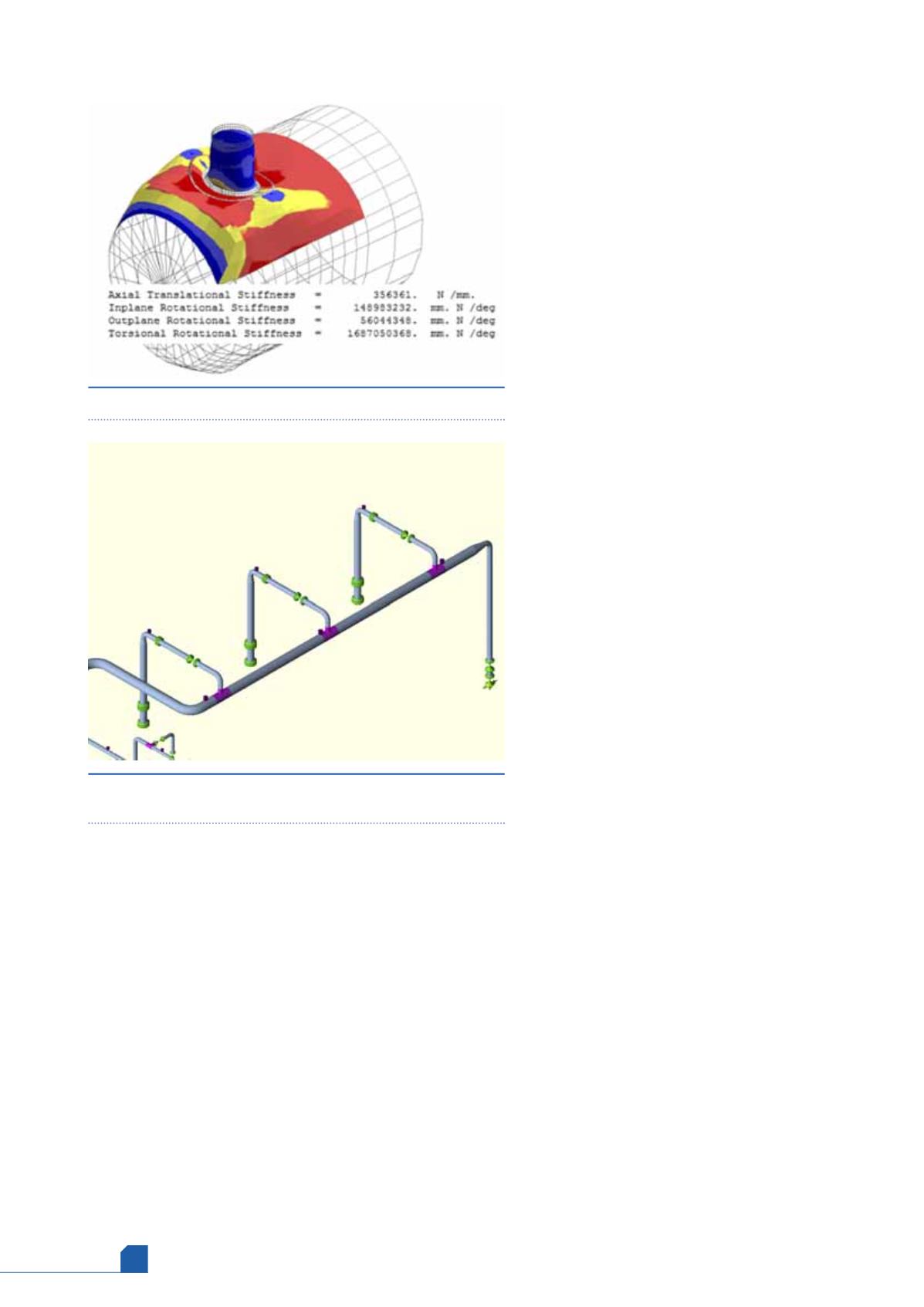
March
2017
HYDROCARBON
ENGINEERING
142
During an inspection phase, a nozzle connection to a critical
item of equipment (shell and tube heat exchanger) was found
to be corroded. The plant owners were concerned that the
remaining thickness, required to safely retain the fluid during
operation, was non-compliant with the site schedules and
safety standards.
The owner operator wanted to avoid replacing the nozzle as
this could be time consuming and potentially costly due to the
necessary system downtime. To avoid a plant outage, On Line
Design & Engineering needed to implement a fitness for service
solution that enabled the heat exchanger and piping to safely
remain in operation.
The challenge
Intergraph CAESAR II® pipe stress analysis software was used to
create a model of the entire piping system, including a
connection from a tower to the heat exchanger nozzle. The
main objective was to avoid any costly shutdowns and to have
a better understanding of the current state of the piping
system.
Figure 2.
An example of the three boiler connections that were
included.
Figure 1.
A variety of stiffness values were calculated.
Initial modelling and analysis combined with
a site inspection proved the whole system to be
sensitive to the stiffness values of nozzle
connections and certain pipe supports. The
challenge was to accurately calculate the
stiffnesses of critical components at, and close
to, the nozzle. This was most significant when
calculating accurate loads and stresses.
The solution
On Line Design & Engineering implemented
CAESAR II for qualification of piping systems in
accordance with appropriate design codes to
ensure compliance with site and industry
standards. Paulin Research Group NozzlePRO
TM
software supplemented the solution by carrying
out local finite element analysis (FEA) on pipe
components, including on the pipe checks.
Using the software, On Line Design &
Engineering found that the piping system in
question was safe since the loads produced on
the equipment nozzle using the more refined and
accurate model were lower than the owner
operator originally believed.
The analysis showed that the nozzle
connection was still compliant with site and
industry standards, enabling the owner operator
to avoid an unnecessary nozzle exchange and an
unproductive and lengthy shutdown of the
system.
The future
Prior to using CAESAR II and NozzlePRO, On Line
Design & Engineering outsourced such complex
engineering projects to other third-party
organisations because the tasks require a high
degree of accuracy and speed of analysis.
Outsourcing was not only more expensive, but it
also meant that control over project timescales
and completion was more difficult. Plus, it
prevented the development of engineering
expertise, a vital component in selling its services.
The successful implementation of the
software on this project provided the company
with expertise to expand its solution offerings to
similar in-depth projects in the future. The
company is planning to further train its
employees in Intergraph solutions and has
already invested in Paulin Research Group
FEATools' FEA software to further facilitate more
accurate analysis. The aim is to prevent
unnecessary piping system modifications while
ensuring compliance with site and national
standards.
Case study 2: NEWES
Background
NEWES is one of the largest maintenance and
service companies for the steam boiler industry








